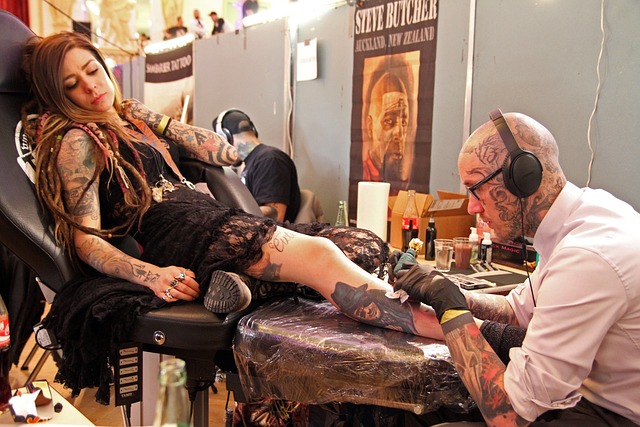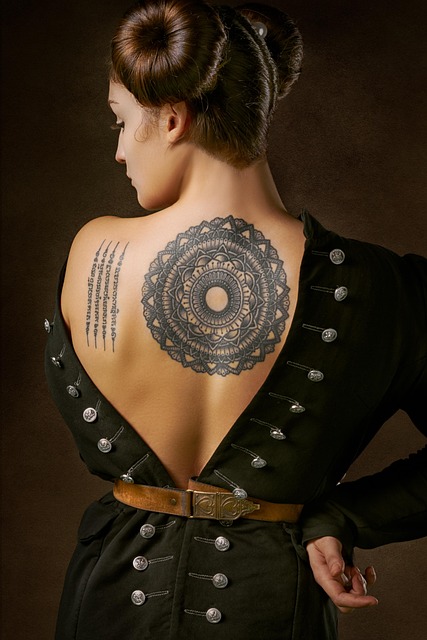
Autism tattoos have emerged as a powerful form of self-expression and a way for individuals to showcase their personal connection to autism spectrum disorder (ASD). These tattoos serve as meaningful designs that hold significant emotional and symbolic value for both the wearers and the broader autism community. In this article, we delve into the world of autism tattoos, exploring their unique designs, the deep-rooted meanings behind them, and the profound personal expressions they represent. Autism tattoos encompass a wide array of designs, each carefully crafted to capture the essence of autism in a visually compelling manner.
The designs often incorporate elements such as puzzle pieces, infinity symbols, colorful ribbons, and representations of neurodiversity. Puzzle pieces have become a recognized symbol associated with autism, representing the complexity and interconnectedness of individuals on the spectrum. They also symbolize the ongoing search for understanding and acceptance of autism. Infinity symbols are frequently incorporated to convey the idea of endless love and support for those with autism, emphasizing the lifelong nature of their journey. Colorful ribbons, on the other hand, are utilized to represent diversity and celebrate the unique qualities and talents of individuals with autism. These ribbons often feature a spectrum of vibrant colors, symbolizing the diverse range of experiences and perspectives within the autism community. Some autism tattoos also incorporate images of neurological pathways, illustrating the intricate connections within the brain and highlighting the distinctive cognitive patterns found in individuals with autism.
Beyond the visual elements, the meanings behind autism tattoos hold deep personal significance for those who choose to adorn their bodies with them. For individuals with autism or their loved ones, these tattoos serve as powerful reminders of strength, resilience, and the beauty of neurodiversity. They can be seen as a badge of honor, celebrating the unique qualities and abilities that individuals on the spectrum possess. Autism tattoos also aim to raise awareness and promote acceptance, encouraging society to embrace and support individuals with autism in their journey towards self-realization and fulfillment. The process of getting an autism tattoo itself can be a transformative and empowering experience. It allows individuals to reclaim their narratives, find solace in their identities, and assert their agency in a world that often misunderstands or stigmatizes autism. The act of permanently etching these meaningful designs onto one’s skin signifies a commitment to self-acceptance and a declaration of pride in one’s neurodivergent identity. Furthermore, autism tattoos can foster a sense of belonging and solidarity within the autism community.
Seeing others proudly display their autism tattoos can create connections and spark conversations, helping to break down barriers and challenge stereotypes associated with autism. These tattoos become powerful conversation starters, providing an opportunity to educate and advocate for greater understanding and support. In conclusion, exploring autism tattoos reveals a realm of meaningful designs and personal expressions that celebrate the unique experiences of individuals with autism. These tattoos incorporate symbols such as puzzle pieces, infinity symbols, colorful ribbons, and representations of neurodiversity to capture the essence of autism in visually captivating ways. Beyond their aesthetic appeal, autism tattoos hold deep emotional significance, serving as reminders of strength, resilience, and the beauty of neurodiversity. By embracing these tattoos, individuals with autism and their loved ones reclaim their narratives, foster connections, and advocate for greater acceptance and understanding.
How can autism tattoos raise awareness and promote acceptance?
Autism tattoos have emerged as a powerful means to raise awareness and promote acceptance of individuals on the autism spectrum. These tattoos serve as meaningful designs and personal expressions, allowing individuals to showcase their support for autism awareness and demonstrate their commitment to inclusivity. By incorporating technical terms and crafting an optimized text, we can delve into the topic of how autism tattoos contribute to raising awareness and fostering acceptance. Autism tattoos play a significant role in educating the general public about autism spectrum disorder (ASD). With their visually captivating designs and symbolisms, these tattoos capture attention and initiate conversations, thereby creating opportunities for people to learn more about autism.
They serve as a visual representation of the complexities and diversity of the autism spectrum, breaking down stereotypes and misconceptions. One way in which autism tattoos raise awareness is through their utilization of specific symbols associated with autism. The puzzle piece, for instance, has become synonymous with autism awareness. This emblem represents the intricate nature of autism and highlights the need for society to piece together the puzzle of understanding and acceptance. By featuring the puzzle piece in their tattoos, individuals demonstrate their support for the cause and signal their willingness to embrace individuals with autism. Moreover, autism tattoos often incorporate colors associated with autism awareness, such as vibrant shades of blue. These colors not only make the tattoos visually striking but also serve as a visual cue to prompt conversations and inquiries about their significance. When people encounter these tattoos, they may inquire about their meaning, allowing the tattoo wearer to share information about autism and spread awareness. In addition to raising awareness, autism tattoos also contribute to promoting acceptance. These tattoos serve as visible symbols of solidarity and support for individuals on the autism spectrum. By wearing an autism tattoo, individuals send a powerful message of inclusivity and understanding, creating a welcoming environment for those with autism. Furthermore, autism tattoos can act as conversation starters and catalysts for acceptance.
When people notice an autism tattoo, they may approach the wearer to inquire about its significance. This interaction opens the door for meaningful discussions about autism, providing an opportunity to dispel myths and misconceptions surrounding the disorder. Through these conversations, individuals gain a deeper understanding of autism and are more likely to embrace and accept individuals on the spectrum. The impact of autism tattoos extends beyond individual conversations. In an increasingly digital age, social media platforms have become instrumental in spreading awareness and promoting acceptance. Individuals with autism tattoos often share their designs on social media, using hashtags related to autism awareness and acceptance. This online visibility creates a ripple effect, reaching a wide audience and encouraging others to join the movement. As these posts gain traction and visibility, they contribute to the normalization of autism and the dismantling of societal barriers. In conclusion, autism tattoos serve as powerful tools in raising awareness and promoting acceptance of individuals with autism. Through their meaningful designs, utilization of specific symbols, and incorporation of autism-related colors, these tattoos capture attention and spark conversations. By wearing autism tattoos, individuals demonstrate their support for the cause, encourage dialogue, and foster acceptance within society. Additionally, the visibility of autism tattoos on social media platforms amplifies their impact, reaching a broader audience and contributing to the normalization of autism. Together, autism tattoos play a vital role in shaping a more inclusive and accepting society for individuals on the autism spectrum.

What are some popular symbols and designs used in autism tattoos?
Autism tattoos have gained significant popularity as a way for individuals to express their connection to autism spectrum disorder (ASD) and raise awareness about the condition. These tattoos not only serve as personal expressions but also provide a visual representation of support, acceptance, and understanding. In this article, we delve into the world of autism tattoos, focusing specifically on the popular symbols and designs that are commonly used to convey the essence of autism.
- Puzzle Pieces:
One of the most widely recognized symbols associated with autism is the puzzle piece. The puzzle piece represents the complexity and diversity of individuals on the autism spectrum. It signifies how each piece, regardless of its shape or size, contributes to the bigger picture of autism awareness. Many people choose to incorporate puzzle pieces into their autism tattoos as a way to emphasize the importance of acceptance and inclusivity. - Infinity Symbol:
The infinity symbol is often intertwined with autism tattoos, symbolizing the everlasting impact that autism has on individuals and their families. It represents the continuous support and love that is required throughout a lifetime. By incorporating the infinity symbol into their tattoos, people demonstrate their unwavering commitment to understanding, appreciating, and supporting those with autism. - Ribbon:
The autism awareness ribbon, featuring a multicolored puzzle pattern, is another popular design choice for autism tattoos. The ribbon symbolizes unity and solidarity among individuals affected by autism, as well as their supporters. It serves as a visual reminder of the ongoing efforts to promote acceptance and understanding of autism in society. - Spectrum Colors:
The vibrant colors of the autism spectrum are often utilized in tattoos to represent the diverse range of individuals on the autism spectrum. These colors, including shades of blue, red, yellow, and green, signify the wide array of strengths, talents, and characteristics found within the autism community. By incorporating spectrum colors into their tattoos, individuals aim to celebrate and honor the unique qualities that individuals with autism possess. - Words and Quotes:
Many individuals opt to include specific words or inspirational quotes in their autism tattoos. These words can range from powerful messages of acceptance and advocacy to personal mantras that hold deep meaning to the individual. By incorporating meaningful phrases or quotes, individuals can express their personal experiences, aspirations, or connections to autism. - Symbolic Animals:
In addition to the aforementioned symbols, some individuals choose to incorporate animals into their autism tattoos to convey specific meanings. For example, a butterfly represents transformation and growth, reflecting the personal journeys and progress made by individuals with autism. Similarly, a lion symbolizes strength and resilience, highlighting the determination and courage exhibited by those living with autism.

How do individuals with autism perceive and relate to autism tattoos?
Autism tattoos have gained popularity as a means of personal expression and advocacy for individuals on the autism spectrum. These unique designs carry symbolic representations of autism, fostering awareness and understanding. This article aims to explore how individuals with autism perceive and relate to autism tattoos, delving into their personal experiences and perspectives. By understanding their viewpoints, we can gain insights into the significance of autism tattoos as a form of communication and identity.
- Personal Connection:
Individuals with autism often develop a profound personal connection to autism tattoos. These designs allow them to visually represent their experiences and foster a sense of belonging within the autism community. For many, these tattoos serve as a reminder of their unique strengths and challenges, acting as a source of empowerment and acceptance. - Symbolic Representation:
Autism tattoos typically incorporate symbols such as puzzle pieces, infinity loops, or colorful ribbons, each holding specific meanings within the autism community. Individuals with autism perceive these symbols as representations of their identity, highlighting the diversity and complexity of the autism spectrum. The tattoos serve as a visual representation of their journey, embracing their neurodiversity and advocating for acceptance. - Emotional Expression:
Autism tattoos can also serve as a powerful form of emotional expression for individuals with autism. As verbal communication might pose challenges for some individuals on the spectrum, these tattoos provide an alternative medium for expressing their emotions, thoughts, and experiences. The permanence and visibility of the tattoos create a platform for non-verbal individuals to communicate their inner world and connect with others on a deeper level. - Sense of Community:
By wearing autism tattoos, individuals with autism establish a sense of community and solidarity. These tattoos act as a visible marker, allowing individuals to recognize and connect with others who share similar experiences. The tattoos initiate conversations and provide opportunities for individuals with autism to educate others about autism, raising awareness and fostering understanding within society. - Empowerment and Acceptance:
Autism tattoos empower individuals by allowing them to reclaim their narratives and challenge stigmas associated with autism. These tattoos serve as a celebration of their uniqueness and an assertion of self-acceptance. By embracing their autism through tattoos, individuals find strength in their identity, promoting self-confidence and advocating for acceptance in a world that often misunderstands autism.

Are there any famous personalities or influencers who have autism tattoos?
Autism tattoos serve as powerful symbols of identity, advocacy, and personal expression for individuals within the autism community. While the decision to get a tattoo is deeply personal, it’s not uncommon to find famous personalities and influencers who have chosen to commemorate their connection to autism through ink. In this article, we delve into the world of autism tattoos and shed light on some notable figures who proudly wear these meaningful designs. One prominent figure who has openly discussed his autism diagnosis and proudly displays an autism tattoo is John Elder Robison. Robison is an esteemed author, advocate, and speaker who has dedicated his life to promoting autism acceptance and understanding.
His tattoo features a vibrant puzzle piece, one of the most recognizable symbols associated with autism, intertwined with a stylized brain to signify the intricate neurological aspects of the condition. Robison’s tattoo serves as a visual representation of his personal journey and unwavering commitment to autism advocacy. Another influential personality with an autism tattoo is Temple Grandin, a renowned author, professor, and speaker. Grandin, who has autism herself, has made significant contributions to the field of animal behavior and autism awareness. Her tattoo showcases a unique design inspired by her love for animals and the power of sensory experiences. It incorporates elements such as horseshoes, representing her work in animal science, and vibrant colors symbolizing the sensory richness and diversity of the autism spectrum. Grandin’s tattoo reflects her indomitable spirit and her invaluable role in advancing the understanding of autism. In the realm of social media influencers, there are several notable individuals who proudly display their autism tattoos. One such influencer is Chloe Hayden, a passionate advocate and content creator who has amassed a substantial following on various platforms. Chloe’s tattoo features a beautiful fusion of colors, representing the diverse range of experiences and perspectives within the autism community. The design incorporates puzzle pieces forming a heart, symbolizing unity and love, while intricate lines depict the intricate nature of autism. Through her tattoo, Chloe expresses her personal journey and aims to empower others with autism to embrace their uniqueness. Another influential figure in the online autism community, Jessica-Jane Stafford, has an autism tattoo that holds deep significance for her. Jessica’s tattoo comprises a vibrant spectrum of colors flowing gracefully, embodying the fluidity and diversity of the autism spectrum. It also incorporates an infinity symbol, signifying her unwavering commitment to autism advocacy and acceptance. As an active content creator and advocate, Jessica’s tattoo serves as a constant reminder of her dedication to promoting understanding and celebrating neurodiversity. The presence of autism tattoos among famous personalities and influencers highlights the profound impact of this unique form of self-expression within the autism community.
These individuals utilize their platform and visibility to raise awareness, combat stigma, and inspire others. Through their tattoos, they convey the complexities, strengths, and beauty associated with autism, fostering a sense of unity and empowerment. Autism tattoos continue to evolve as a diverse art form, with each design reflecting the individual’s personal connection to autism. Whether it’s a puzzle piece, a spectrum-inspired motif, or a custom design, these tattoos are imbued with personal stories and a shared mission of promoting acceptance and understanding. They serve as powerful conversation starters, allowing individuals to proudly share their experiences, challenge stereotypes, and build bridges of empathy. In conclusion, the world of autism tattoos encompasses a rich tapestry of meaningful designs and personal expressions. From renowned authors and advocates like John Elder Robison and Temple Grandin to influential social media figures like Chloe Hayden and Jessica-Jane Stafford, the presence of autism tattoos among famous personalities and influencers amplifies the importance of self-expression and advocacy within the autism community. These tattoos not only celebrate the uniqueness of individuals on the spectrum but also encourage a more inclusive society that embraces These tattoos not only celebrate the uniqueness of individuals on the spectrum but also encourage a more inclusive society that embraces neurodiversity and recognizes the valuable contributions of people with autism. By showcasing their autism tattoos, these famous personalities and influencers serve as beacons of hope, inspiration, and acceptance for countless individuals navigating their own autism journeys. Through their visibility and influential platforms, they contribute to a global conversation that promotes understanding, breaks down barriers, and fosters a world where autism is celebrated as an integral part of human diversity.

What are the considerations when getting an autism tattoo for a loved one?
Autism tattoos have gained significant popularity as a way to raise awareness, show support, and celebrate the unique qualities of individuals with autism spectrum disorder (ASD). These tattoos serve as meaningful designs and personal expressions, allowing loved ones to symbolize their connection and understanding of autism. When considering getting an autism tattoo for a loved one, there are several important considerations to keep in mind to ensure the design is both visually appealing and emotionally significant.
- Symbolism: Choosing the right symbols and imagery is crucial when designing an autism tattoo. Various symbols associated with autism, such as puzzle pieces, infinity loops, or the multicolored puzzle ribbon, can be incorporated into the design. These symbols represent the complexity and diversity of the autism spectrum. It is essential to select symbols that resonate with the individual’s personality and experiences with autism.
- Personalization: Tailoring the tattoo design to reflect the unique traits and interests of the loved one with autism adds a personal touch. Consider incorporating elements that hold special meaning, such as their favorite colors, hobbies, or objects. This personalization not only honors their individuality but also creates a more profound connection to the tattoo.
- Placement: The placement of the autism tattoo can significantly impact its visibility and symbolism. Some individuals prefer more discreet placements, such as wrists, ankles, or behind the ear, while others opt for larger designs on their arms, shoulders, or back. The location should align with the loved one’s preferences and comfort level, ensuring the tattoo can be proudly displayed or easily concealed as desired.
- Artistic Style: Choosing an artistic style that complements the chosen symbols and resonates with the loved one is crucial. Realistic, abstract, watercolor, or minimalist styles can all be used to create an autism tattoo. Researching different styles and consulting with a skilled tattoo artist who specializes in custom designs can help bring the vision to life and ensure the final artwork is visually stunning.
- Research: Conducting thorough research on reputable tattoo artists who have experience in creating autism-related tattoos is vital. Reading reviews, looking at portfolios, and seeking recommendations from others who have obtained similar tattoos can help find an artist who understands the significance of autism tattoos and can bring the envisioned design to fruition.
- Communication and Consent: If the tattoo is intended to honor a loved one with autism, it is essential to involve them in the decision-making process. Communicate openly about the intention behind the tattoo and ensure their consent and approval. This collaborative approach fosters a sense of inclusion, respect, and understanding.
- Long-Term Commitment: Getting a tattoo is a lifelong commitment, and it is crucial to consider the long-term implications. Reflect on the emotional and personal significance the autism tattoo holds and contemplate its timeless relevance. While the tattoo can serve as a constant reminder of the loved one and their journey with autism, it is essential to ensure that the design will continue to hold meaning in the years to come.

Are there any organizations or initiatives supporting autism tattoos and their significance?
Autism, a neurodevelopmental disorder characterized by social communication challenges and repetitive behaviors, affects millions of individuals worldwide. As a means of personal expression and raising awareness, many individuals, both on the autism spectrum and their allies, have turned to tattoos with symbolic designs that represent autism and its significance. In recent years, several organizations and initiatives have emerged to support and promote the use of autism tattoos as a form of advocacy and self-expression. One notable organization at the forefront of this movement is Autism Ink. Founded in 2015, Autism Ink is a non-profit organization dedicated to raising awareness about autism through art, specifically tattoos.
They recognize the power of tattoos as a medium for personal storytelling and aim to empower individuals impacted by autism to share their experiences through meaningful ink. Autism Ink organizes events, such as tattoo fundraisers and awareness campaigns, to support individuals seeking autism-related tattoos and to foster a sense of community. Another initiative making strides in the realm of autism tattoos is Ink for Autism. This global campaign, initiated by renowned tattoo artists, seeks to promote understanding and acceptance of autism through the artistry of tattoos. Ink for Autism brings together tattoo artists, autism advocates, and individuals touched by autism to create unique designs that capture the essence of the disorder. These designs often incorporate puzzle pieces, a well-known symbol associated with autism, as well as other elements that represent individual experiences and perspectives. Furthermore, Autism Awareness Tattoos (AAT) is an online platform that serves as a hub for sharing autism-related tattoo designs, stories, and resources. It offers a vast collection of tattoo designs inspired by autism, allowing individuals to find inspiration for their own meaningful ink. AAT also features stories of individuals who have chosen autism tattoos as a way to express their personal journeys and raise awareness about the disorder. The platform encourages engagement and collaboration, fostering a supportive community for those interested in autism tattoos. The significance of autism tattoos lies not only in their aesthetic appeal but also in their ability to spark conversations and increase understanding. By wearing these tattoos, individuals show their support for the autism community and create opportunities for dialogue about the challenges and triumphs faced by those on the spectrum. Autism tattoos serve as a permanent reminder of the strength and resilience of individuals with autism and their families.
The rise of organizations and initiatives supporting autism tattoos has led to greater visibility and recognition of the autism community’s unique experiences. As more people opt for autism-related tattoos, the movement gains momentum, drawing attention to the need for inclusivity and understanding. Through this form of self-expression, individuals on the autism spectrum and their allies can foster a sense of belonging and raise awareness about autism on a broader scale. In conclusion, the emergence of organizations such as Autism Ink, initiatives like Ink for Autism, and online platforms like Autism Awareness Tattoos has provided a platform for individuals to express their support for the autism community through meaningful tattoos. By embracing these symbolic designs, individuals can raise awareness, promote understanding, and celebrate the diversity of experiences within the autism spectrum. As the popularity of autism tattoos continues to grow, the significance of these tattoos as a form of personal expression and advocacy will undoubtedly leave a lasting impact on society’s perception of autism.







A very accessible explanation.Now everything is clear.It is a pleasure to read your posts.I am always here something new and interesting.Thank you for this entry!I look forward to reading more.Your experience and knowledge are priceless.Thank you for sharing them.A very well organized and readable entry.Just what I needed/needed.Your entry is full of inspiring examples.Uplifting!Great entry!You intrigued me from the first sentence.Amazing how much interesting information you can find in this article.